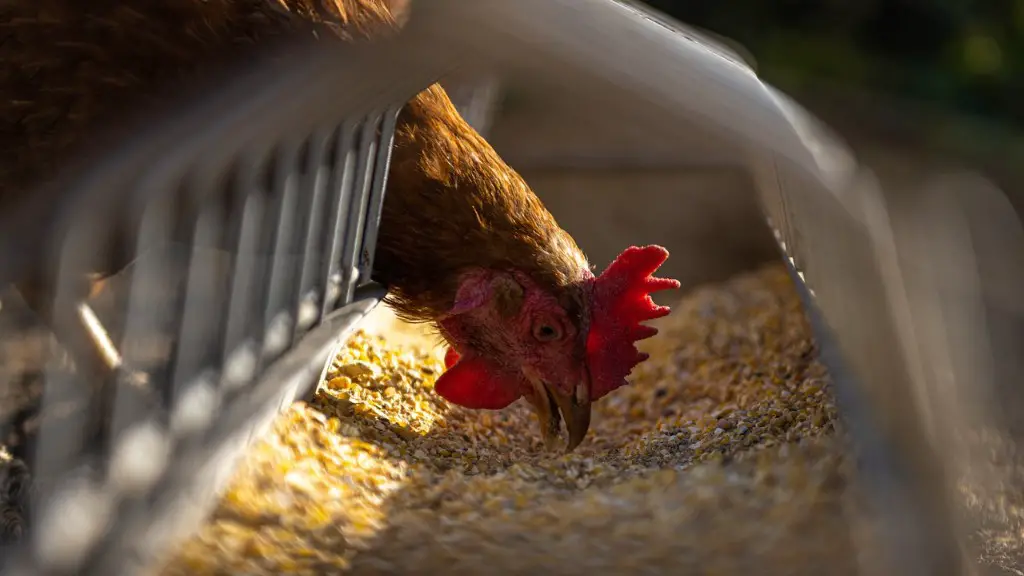Agricultural Exports of the United States
The United States is a major exporter of agricultural products and commodities, making up 6.1% of total global exports of agricultural commodities. Since the turn of the century, the nation’s agricultural exports have steadily grown, accounting for an increasing share of both global and domestic production. Currently, the U.S. is the world’s largest exporter of corn, soybeans, wheat, and poultry, and the second-largest exporter of pork and lard.
In 2020, the U.S. exports of agricultural products were valued at nearly $135 billion, an increase of 8.4% over 2019’s figure. Nearly two-thirds of these exports were food and kindred products, followed by feed and feed preparations at 11.6%. On the import side, the U.S. imported roughly $77 billion worth of agricultural commodities in 2020, a slight 1.1% increase over the previous year.
The U.S.’s largest agricultural export market is Canada, followed by Mexico and Japan. Other key markets include China, the EU, South Korea, Hong Kong, Philippines, Australia and the United Kingdom. In total, the U.S. exports have access to over 95 markets, accounting for 80% of global export destinations.
The major export categories vary across the markets. For example, in the EU, horticulture and dairy products are the leading exports, whereas in China grains and feed make up the bulk of U.S. agricultural exports. Other countries import a broader range of commodities, including poultry, meat, dairy, grains, and feed.
In addition to its exports of agricultural products, the U.S. also exports agricultural services, such as crop protection services, feed applications, crop consulting, training, education, and technology services. These exports are estimated to be worth approximately $15 billion annually.
Feed Exports of the United States
The United States is the world’s largest exporter of feed and feed preparations, with an estimated 17.5% of global exports in 2020. This sector consists of a wide variety of products, including livestock, poultry, fish, crustacean and mollusk feeds, oilseed and grain meal, husks and hulls, seed cake and groundnut cake, briquetted feed, hay and straw, and other feed materials.
The U.S. exports a significant amount of Feed Preparation into the markets for feed ingredients and is a major supplier to Asian and Middle Eastern countries. The U.S. also exports a significant amount of hay and straw, mostly to European countries, to meet the requirements of the dairy industry. The U.S. exports a wide range of products related to feed and feed preparations, including formulations, supplements, fortducers, and premixes, as well as bulk feed ingredients such as grain and oilseeds, animal and fish meals, and hay and straw.
The U.S. is a leader in the production of feed-grade vitamins and minerals as well, and is a major exporter to markets around the world. The U.S. also leads in the production of specialty feed ingredients such as omega-3 fatty acids, probiotics, and enzymes. The U.S. also exports a significant amount of feed equipment, including feed grinders, feed mixers, and feed storage tanks.
The U.S. has a strong presence in the international grain market, with a large share of grain exports going to Asian, South American, and African countries. In addition, the U.S. is a significant exporter of corn gluten meal and other co-products, as well as feed concentrates and pet foods.
Overall, U.S. exports of high-quality feed have grown significantly over the last few decades, and have enabled increased global production of feed and feed-related products.
Grain Exports of the United States
The U.S. is a major exporter of grains, including corn, wheat, soybeans and rice. U.S. grain exports are particularly important in supplying the growing needs of the animal feed industry worldwide, as well as providing consumers with a safer and more affordable food supply. The U.S. is the world’s largest exporter of corn, wheat and rice, the second-largest exporter of soybeans, and the third-largest exporter of barley.
U.S. grain exports totaled $44.8 billion in 2020, a 28.4% increase over 2019. Corn exports were the largest contributor at $19.3 billion, followed by soybeans at $17.3 billion, wheat at $4.7 billion, and barley at $2.2 billion. Other grains accounted for the remaining $1.3 billion in exports.
The largest grain export destinations are China, Japan, Mexico and Canada. The Chinese market is particularly important for U.S. corn and soybean exports, and 2019 saw record-high exports of soybeans to China. Other top export destinations include the Philippines, South Korea, the EU and India.
U.S. grain production has grown steadily over the last few decades, and this growth has been supported by advances in farming techniques, such as precision agriculture, as well as government supports. The U.S. Department of Agriculture has provided research grants, farm subsidies and other supports in order to facilitate the growth and development of the U.S. grain industry.
The U.S. is also investing in grain exports infrastructure, including new and upgraded grain storage facilities, rail and trucking infrastructure, container terminals and icebreakers to facilitate exports to the Far East. Overall, the U.S. is well positioned to continue to be a major supplier of grains for the global feed and food industry in the coming years.
Meat Exports of the United States
The U.S. exports an enormous amount of meat, primarily pork, beef and poultry. These exports totaled $21 billion in 2020, a 4.5% increase over 2019. Pork exports were the largest contributor at $9.9 billion, followed by beef at $7.5 billion, and poultry at $3.6 billion.
The largest imports of U.S. meat are Japan, South Korea, China, Mexico, and Canada, though other countries such as Hong Kong, the Philippines and Taiwan are also significant markets. U.S. meat exports to Japan account for nearly one-third of total U.S. meat exports, while exports to South Korea, China, Mexico and Canada account for an additional one-quarter. Other countries such as the EU, Vietnam, and the United Arab Emirates are significant, though smaller, markets for U.S. meat exports.
U.S. producers are at the forefront of export development, utilizing innovative technology and production methods to produce a wide variety of products tailored to meet the demands of different markets. U.S. producers have also developed a wide range of value-added products, such as marinated meats, convenient and portion-controlled products, and vacuum-packed products, to meet the needs of different customer bases.
In addition to its domestic production, the U.S. also imports significant amounts of meat from other countries. Significant sources include Canada, with particular focus on pork, and Mexico for beef, pork, and prepared meats. U.S. imports are primarily used to supplement domestic production when supply is tight, or to fill specific customer demands for exotic or specialty items.
Overall, U.S. meat exports have grown significantly over the last decade, and will continue to play an important role in the U.S. and global food industry in the coming years.
Dairy Exports of the United States
The U.S. is a major exporter of dairy products, with exports totaling $6.2 billion in 2020, a 5.1% increase over 2019. The U.S. is one of the world’s largest exporters of cheese and dairy powders, as well as a significant exporter of butter and other dairy products.
The U.S.’s largest export markets are Mexico, ASEAN countries, the Middle East, Japan, the EU and the United Kingdom. The U.S. is a significant exporter of cheese to Mexican markets, as well as to the Middle East and ASEAN countries, and butter to the EU and UK. U.S. dairy powder export markets include the EU, ASEAN countries, and Mexico.
U.S. dairy production is largely focused on domestic demand, with more than two-thirds of dairy production intended for domestic markets. While the U.S. does not produce the same variety of cheeses as the EU, for example, many U.S. specialty cheeses are appreciated by consumers around the world. In addition to cheese, the U.S. is a major producer of other dairy products, such as butter, yogurt and ice cream.
In order to increase its exports, the U.S. has implemented a number of dairy policies, including export subsidies and trade agreements, as well as developing new technologies and practices to reduce cost and improve safety. The U.S. is also partnering with other countries to reduce tariffs and facilitate trade.
Overall, the U.S. exports a significant amount of dairy products, and is continuously developing and refining its strategies in order to meet global demand for its products in the coming years.
Fruit and Vegetable Exports of the United States
Fruits and vegetables are an important part of global trade, with the U.S. being a major player in this market. The U.S. exports an estimated $8.1 billion worth of fruits and vegetables annually, an increase of 4.6% over 2019.
The U.S. is a major exporter of fruit, including fresh apples and oranges, as well as canned fruits such as peaches, pears, and pineapple. The largest export market for U.S. fruit is the EU, followed by Mexico, Canada and Japan. Other export markets include the Middle East, ASEAN countries, India, and South Korea.
The U.S. is also a major exporter of fresh and processed vegetables, including potatoes, carrots, onions, tomatoes, broccoli, and cauliflower. The EU is a major export market for U.S. vegetables, followed by Canada and Mexico. Other export markets include Japan, the Middle East, and India.
In order to meet export demand, the U.S. has invested in a number of initiatives and efforts, including research and development of disease resistance, export assistance, access to new markets, and improved packaging and storage. In addition, the U.S. is engaged in a number of trade agreements and market access programs to reduce tariffs and facilitate trade.
Overall, the U.S. exports a significant amount of fruits and vegetables, and is continuously working to increase its presence in international markets, as well as maintaining a safe and reliable supply of quality products for global consumers.





